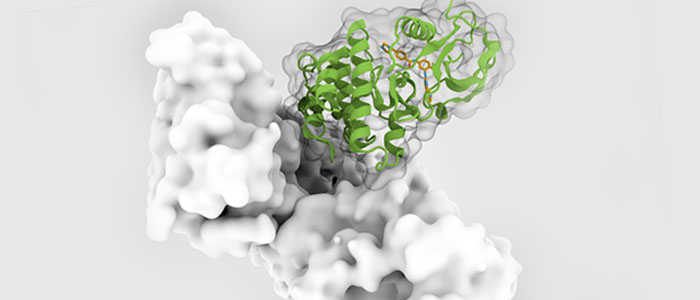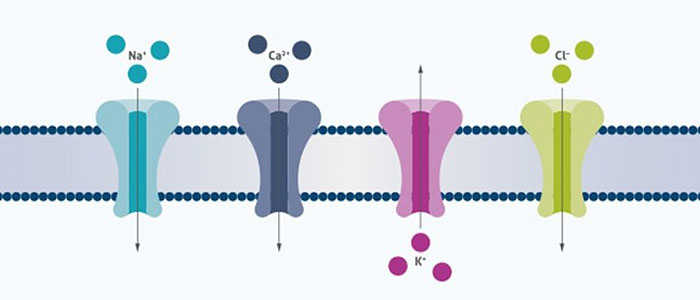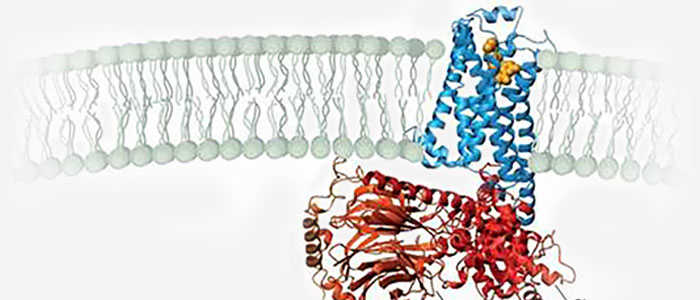Membrane Lysates
Subcategory
Background
Overview
Membrane lysates are mixtures of proteins and other biomolecules extracted from cell membranes. In biological research, membrane lysates are often used to study the function of membrane proteins, signal transduction pathways, intracellular transport and other processes. Because the cell membrane is the outer barrier of the cell and contains many important proteins and lipids, membrane lysates are critical to understanding how cells interact with their external environment.
Preparation Process
Cell lysis: First, the cell needs to be cleaved to release the membrane. This is usually done by adding a cracking buffer, which typically contains non-ionic or ionic detergants such as NP-40, Triton X-100, sodium deoxycholate, and SDS. These detergents disrupt the lipid bilayer structure of the cell membrane, allowing the release of membrane proteins and other molecules.
Centrifugation: The cracked cell mixture usually requires centrifugation to separate the membrane lysate. During centrifugation, cell fragments and insoluble matter settle at the bottom, while membrane lysates are located in the supernatant.
Protein concentration determination: In order to ensure the consistency and repeatability of the experiment, it is necessary to determine the protein concentration in the membrane lysate. Common methods include Bradford analysis, Lowry analysis, or BCA analysis.

Research Progress
The development and research of cell membrane lysates is an important part of cell biology. Here are some of the key milestones in the field:
In the early 20th century, scientists began to study cell membranes by isolating them from mammalian red blood cells and discovered a substance that could dissolve lipids, while also observing an enzyme that could break down proteins. In the 1950s and 1960s, with the application of cryo-electron microscopy technology, people have a deeper understanding of the structure of cell membranes. The technique allows scientists to better observe the structure of cell membranes in three dimensions.
The development of cell membranes can also be traced back to the early prokaryotic cells, which gradually formed the structure and function of modern cell membranes after a long period of evolution and evolution. In the process of exploring the composition and structure of cell membranes, the scientific community has proposed a variety of models to explain the function and behavior of cell membranes. These models include flow-mosaic models, which are based on the analysis of the composition and structure of cell membranes.
Advantages
Efficient extraction of target molecules. One of the main advantages of cell membrane lysates is the ability to extract proteins and other biomolecules within cells efficiently. By using specific lysates, researchers can target the desired molecules while minimizing the mixing of non-target molecules.
Help to study cell signaling. Cell membrane lysates can be used to study signaling pathways within cells because many signaling molecules and receptors are located on the cell membrane. By cracking the cells, researchers can more easily access and study these molecules.
Promote drug development and disease research. The preparation of cell membrane lysates is also of great significance for drug screening and the study of disease mechanisms. By analyzing protein expression and modifications in the lysate, researchers can better understand the molecular basis of the disease and search for potential therapeutic targets.

Notes
Temperature control. The cleavage process should be performed at low temperatures, usually on ice or at 4°C, to reduce the risk of protein degradation and non-specific interactions.
Avoid repeated freeze-thaw. Repeated freeze-thaw during storage should be avoided, as this can lead to protein degradation and sample contamination. It is recommended that the lysate be divided into small portions and used as needed.
Remove interference. Before using lysates for specific biological experiments, it is necessary to conduct control tests. This includes checking whether the composition of the lysate can affect the results of the experiment, such as affecting enzyme activity or interacting with certain reagents.
Applications
- Proteomic studies. Cell membrane lysates can be used in proteomics studies to help researchers identify and quantify various proteins within cells. This is essential for understanding cell function, signaling pathways, and protein changes in disease states.
- Drug development. In the drug development process, cell membrane lysates can be used to screen and evaluate the effects of potential drugs, especially in the research of anticancer drugs, by lyzing tumor cells to evaluate the cytotoxicity and therapeutic effect of drugs.
- Study of disease mechanism. Applications of cell membrane lysates also include the study of the molecular mechanisms of diseases such as cancer, neurodegenerative diseases and infectious diseases. By analyzing specific proteins and nucleic acids in the lysate, potential causes of disease can be revealed.
- Cell function test. Cell membrane lysates can be used for a variety of functional tests, such as enzyme activity assays, cell cycle analysis, and apoptosis studies, to assess the physiological state and function of cells.
- Clinical diagnosis. In clinical diagnosis, cell membrane lysates can be used to detect specific biomarkers, such as tumor markers or pathogens in infectious diseases, to aid diagnosis and therapeutic monitoring of diseases.

Case Study
Case Study 1: Human Heart Membrane Lysate
In ischemic heart disease, NKA activity decreases due to the decreased expression of the pump subunits. HIF-1α was silenced through adenoviral infection, and cells were kept in normoxia (19% O2) or hypoxia (1% O2) for 24 h. We investigated the mRNA and protein expression of α1-, β1-NKA using RT-qPCR and Western blot in whole-cell lysates, cell membranes, and cytoplasmic fractions after labeling the cell surface with NHS-SS-biotin and immunoprecipitation. NKA activity and intracellular ATP levels were also measured. In hypoxia, silencing HIF-1α prevented the decreased mRNA expression of α1-NKA but not of β1-NKA. Hypoxia decreased the plasma membrane expression of α1-NKA and β1- NKA compared to normoxic cells. In hypoxic cells, HIF-1α silencing prevented this effect by inhibiting the internalization of α1-NKA. Total protein expression was not affected. The decreased activity of NKA in hypoxic cells was fully prevented by silencing HIF-1α independent of cellular ATP levels. This study is the first to show that in hypoxic H9c2 cardiomyoblasts, HIF-1α controls the internalization and membrane insertion of α1-NKA subunit and of NKA activity.

(Beyza Gurler, 2023)
Fig1. Effect of hypoxia and HIF-1α silencing on the abundance of α1-NKA in plasma membranes.
Case Study 2: Mouse Brain Membrane Lysate
Hyperactivation of cyclin-dependent kinase 5 (Cdk5) by p25, contributes to neuroinflammation causing neurodegeneration in Parkinson's disease (PD) and Alzheimer's disease. However, the mechanism by which Cdk5 induces neuroinflammation in the PD brain is largely unexplored. Here, Cdk5 phosphorylates cytosolic phospholipase A2 (cPLA2) at Thr-268 and Ser-505 sites lead to its activation and generation of eicosanoid products. Mutational studies using site-directed mutagenesis and molecular simulations show that the architecture of the protein changes on each single-point mutation. Interestingly, double mutations also led to a severe decline in the activity of cPLA2 and to the disruption of its translocation to the plasma membrane. Further, the brain lysates of transgenic PD mouse models show hyperactivation of Cdk5, resulting in enhanced phosphorylation of Thr-268 and Ser-505 of cPLA2 and its heightened activity, confirming the findings observed in the cell culture model of PD.

(Sangita Paul, 2022)
Fig2. The blot shows the expression pattern of Cdk5, p35, and p25 in control versus PD mouse brain protein lysate.
Case Study 3: Hamster Ovary Lysate
Mucin 21(Muc21)/epiglycanin is expressed on apical surfaces of squamous epithelia and has potentially protective roles, which are thought to be associated with its unique glycoforms, whereas its aberrant glycosylation is implicated in the malignant behaviors of some carcinomas. Despite the importance of glycoforms, the researchers lack tools to detect specific glycoforms of mouse Muc21. In this study, they generated two monoclonal antibodies (mAbs) that recognize different glycoforms of Muc21. they used membrane lysates of Muc21-expressing TA3-Ha cells or Chinese hamster ovary (CHO)-K1 cells transfected with Muc21 as antigens. Specificity testing, utilizing Muc21 glycosylation variant cells, showed that mAb 1A4-1 recognized Muc21 carrying glycans terminated with galactose residues, whereas mAb 18A11 recognized Muc21 carrying sialylated glycans. mAb 1A4-1 stained a majority of mouse mammary carcinoma TA3-Ha cells in vitro and in engrafted tumors in mice, whereas mAb 18A11 recognized only a subpopulation of these. mAb 1A4-1 was useful in immunohistochemically detecting Muc21 in normal squamous epithelia.

(Jun Nishida, 2022)
Fig3. WB and LB analysis with the lysate of CHO-K1-pcDNA3.1-N-FLAG-Muc21 cells (T) and the lysate of CHO-K1-pcDNA3.1 mock cells (M).
Advantages
- Technical support. Purchase our products and you will receive full technical support. Our team of scientists is ready to answer your questions and help you break through your research bottlenecks.
- Strong scientific research strength. Our research team has a rich academic background and we are always exploring more popular products.
- Customized services. Our consulting services can provide customized solutions to meet customers' specific needs and requirements.
- Reputation Guarantee. We promise that all products are subject to strict quality control, and guarantee fast and safe logistics distribution, so that your research results are not delayed due to supply problems.
Creative BioMart can provide various types of Membrane Lysates to meet different research goals. Thesse lysates are prepared by homogenization in RIPA buffer containing 5% β-mercaptoethanol or using a proprietary technique. The lysate are stored in HEPES pH 7.9, MgCl2, KCl, EDTA, Sucrose, Glycerol, Sodium deoxycholate, and NP-40. You can also let us know if you have any customized requirements. Please contact us for more product details.
References
- Gurler B, Gencay G, Baloglu E. Hypoxia and HIF-1α Regulate the Activity and Expression of Na,K-ATPase Subunits in H9c2 Cardiomyoblasts. Curr Issues Mol Biol. 2023;45(10):8277-8288.
- Paul S.; et al. Cyclin-Dependent Kinase 5 Regulates cPLA2 Activity and Neuroinflammation in Parkinson's Disease. eNeuro. 2022;9(6):ENEURO.0180-22.2022.
- Nishida J.; et al. Unique Glycoform-Dependent Monoclonal Antibodies for Mouse Mucin 21. Int J Mol Sci. 2022;23(12):6718.
Contact us or send an email at for project quotations and more detailed information.
Quick Links
-

Papers’ PMID to Obtain Coupon
Submit Now -

Refer Friends & New Lab Start-up Promotions








